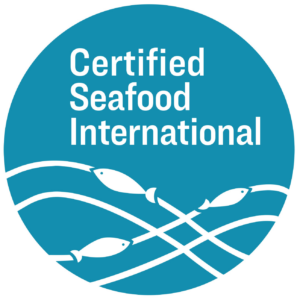Alaska Salmon
The U.S. Alaska salmon commercial fisheries were awarded continued certification in September 2025. The certificate encompasses all North American Pacific salmon species:
- Chinook (Oncorhynchus tschawytscha, also called “King”)
- Sockeye (Oncorhynchus nerka, also called red”)
- Coho (Oncorhynchus kisutch, also called “silver”)
- Pink (Oncorhynchus gorbuscha, also called “humpie”)
- Chum (Oncorhynchus keta, also called “keta”)
Certified Alaska salmon fisheries, employ troll, purse seine, drift gillnet, beach seine, set gillnet and fish wheel (Upper Yukon River only) gear. Fishing occurs in the four administrative Regions of Alaska that are principally managed by the Alaska Department of Fish and Game (ADFG). While certification covers the entire United States Exclusive Economic Zone (EEZ) off the coast of Alaska, most of the harvest is taken in the internal waters (0-3 nautical miles, and other enclosed waters) of the state of Alaska. Alaska salmon are anadromous. This means they spawn in fresh water and the young fry migrate to seas where they grow and mature for between one and five years depending on the species. At sea they store fat and nutrients critical for their long journey home. When the time comes, they swim inland sometimes as far as 2000 miles to the place where they were hatched. Their new spawning cycle then starts.
Certification Reports
Surveillance IV and 2nd Re-Assessment:
- Alaska Salmon Surveillance #4 Final Report – May 2025
- Alaska Salmon Surveillance #4 Announcement – Feb 2025
- Alaska Salmon Surveillance #3 Final Report – May 2024
- Alaska Salmon Surveillance #3 Announcement – March 2024
- Alaska Salmon Surveillance #2 Final Report – March 2023
- Alaska Salmon Surveillance #2 Announcement – Nov 2022
- Alaska Salmon Surveillance Final Report – March 2022
- Alaska Salmon Surveillance Announcement – Nov 2021
- Alaska Salmon Full Assessment Final Report – June 2020
- AK Salmon Surveillance #4 Report – April 2020
- Alaska Salmon Notice of 4th Surveillance and 2nd Re-assessment November 2019
Surveillance III:
- AK Salmon Surveillance #3 Report – Mar 2019
- Alaska Salmon Notice of 3rd Surveillance and Assessment Team Nov 2018
Surveillance II:
- Surveillance #2 Report, February 2018
- Alaska Salmon Notice of 2nd Surveillance, Team and Site Visit Dec 2017
Surveillance I:
Fishery Info
Five unique species of salmon swim in Alaskan waters: Chinook (King), sockeye, coho, pink and chum (keta).
- The five species of Alaska salmon are harvested primarily between May and September
- The exception is Chinook salmon which is harvested nearly year-round
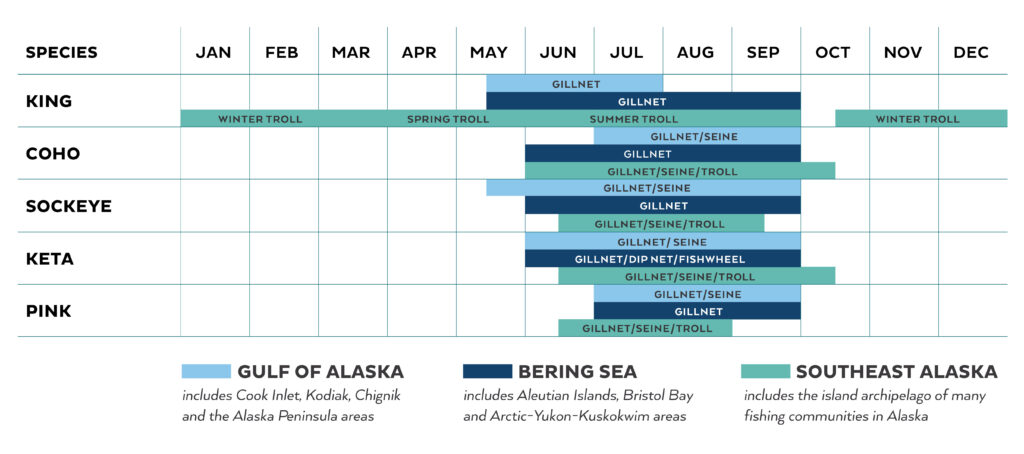
Source: https://www.alaskaseafood.org/alaska-seafood-101/seasonality-harvesting/
Fishing occurs in the four administrative Regions of Alaska. While certification covers the entire United States Exclusive Economic Zone (EEZ) off the coast of Alaska, most fishing occurs relatively close to the coastline in the internal waters (0-3 nautical miles, and other enclosed waters) of the state of Alaska.
All fishing gear used by Alaska harvesters is specific to species behavior and fishery location.
- Salmon school tightly, not mixing very much with other species of fishes, so commercial salmon fishing has virtually no incidental catch of non-salmon species.
- The three main types of commercial harvesting methods for salmon are gillnetting, purse-seining and trolling.
Gillnetting (Chinook, sockeye, coho, pink and chum)
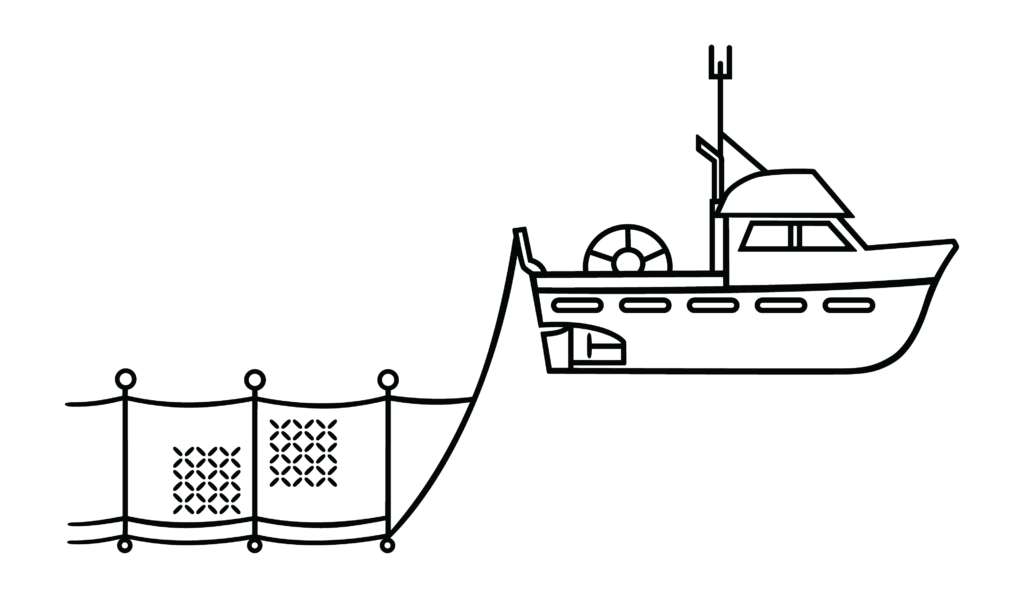
A majority of Alaska salmon are caught in gillnets of one type or another. Gillnetting involves laying a net wall in the water in the path of the fish and waiting for them to put their heads into the mesh. When they do, the gills become entangled in the webbing and prevent the fish from escaping. Most gillnetters are small vessels, usually crewed by only one or two people. State law dictates that gillnetters in Bristol Bay may be no longer than 32 feet. Most gillnetters outside of Bristol Bay are between 32 and 42 feet long. A gillnet fisherman uses a net that is usually between 900 and 1800 feet long, as required by the State of Alaska for fisheries management reasons.
Source: https://www.alaskaseafood.org/
Purse Seining (sockeye, pink and chum)
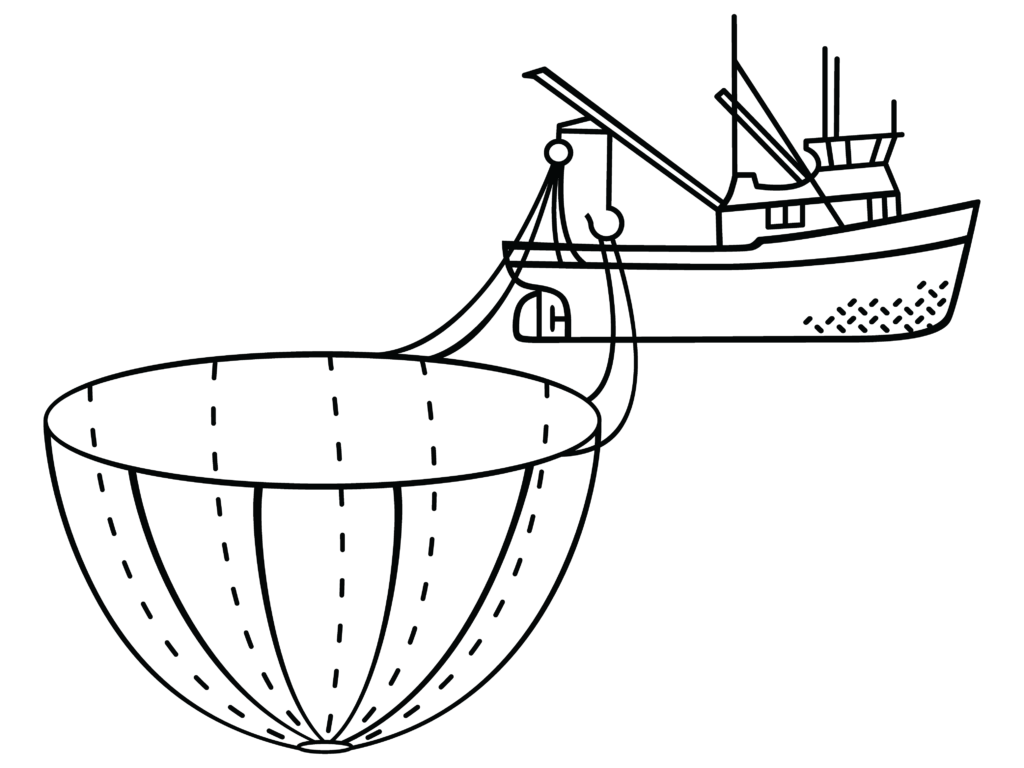
Seiners use a net that is set in a circle to form a ‘purse’ that closes at the bottom. Synthetic corks keep the net floating at the surface and a skiff pulls one end of the net around an area of schooling salmon to enclose them in the purse. Once the purse has been closed, the net is hauled aboard with a power block and a winch. Seiners usually set their nets in areas close to shore where large schools of salmon are found. The net mesh size used in seining is smaller than a gillnet. Varying by region, seine nets span around 1,500 feet long and 100 feet deep. Seine vessels are the largest among the Alaska salmon harvesters and catch the largest volume of Alaska salmon.
Source: https://www.alaskaseafood.org/resource/alaska-salmon-buyers-guide/
Trolling (Chinook, coho and chum)

Troll fishing is an artisanal form of fishing practiced only in Southeast Alaska. Trollers are small fishing vessels operated by one or two people who fish with artificial lures or baited hooks attached to long lines. Trollers are generally allocated larger areas to fish, but have lower catch rates than harvesters using nets. Generally, trollers fish offshore and intercept salmon on the outer coast as they start their migration through inland waters. Troll-caught salmon are known for their quality.
Source: https://www.alaskaseafood.org/resource/alaska-salmon-buyers-guide/
The Alaska Department of Fish and Game (ADFG) manages the salmon fishery by setting ‘escapement goals’ that provide sufficient numbers of adult spawning salmon to escape capture in the fishery and reach the spawning grounds in the freshwater environment, thus maintaining the long-term health of salmon populations. In order to maintain escapement, the commercial harvest fluctuates from year-to-year. In Alaska, the salmon fisheries are tactically managed while they are actually taking place, known as ‘in-season management’ through counting fish as they swim up to their spawning grounds. Escapement monitoring is done in a variety of ways by fish biologists using sonar, flying surveys or visually counting fish from stands as they migrate upstream. Local ADFG offices make in-season management decisions for the 15,000+ salmon spawning streams that the state manages.
Vessels harvesting salmon that is certified by CSI under the Alaska salmon certificate operate exclusively within Alaska state waters and federal waters of the United States Exclusive Economic Zone (EEZ). Alaska state and U.S. federal law regulate the treatment of workers on vessels that harvest certified Alaska salmon.
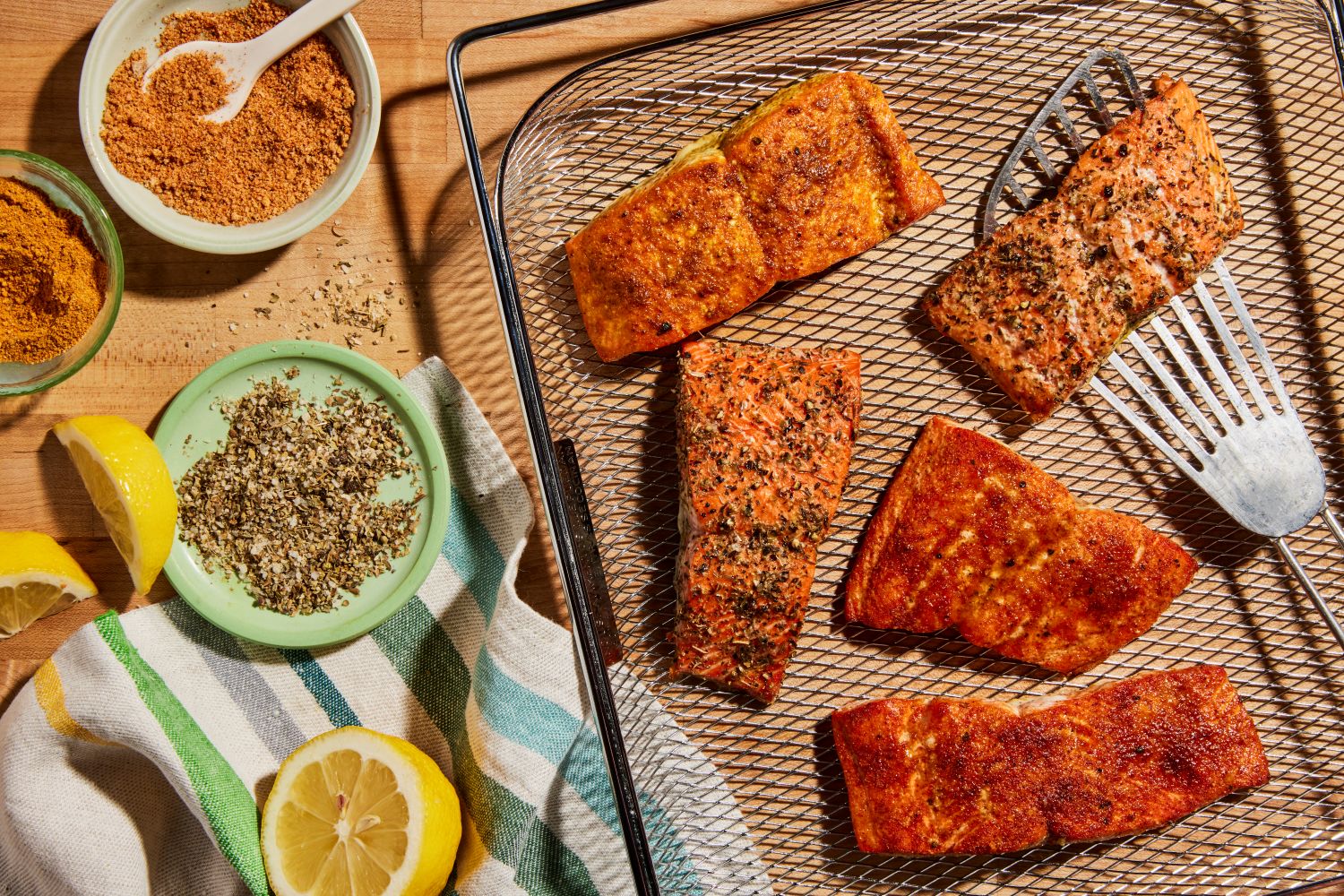
- Chinook salmon, also known as King, is prized for its color, high oil content, firm texture and succulent flesh.
- Sockeye salmon, also known as red, is a high-oil content species of salmon known for its rich flavor and distinctive deep red flesh, which retains its color throughout cooking.
- Coho salmon, also known as silver, has an orange-red flesh, firm texture and delicate flavor, many consider it the best salmon for grilling.
- Pink salmon has a light, delicate flavor great for roasting or grilling, or topping with your favorite sauce.
- Chum salmon, also known as keta, has a mild flavor and firm pink flesh, making them a great choice for grilling or roasting.
Source: https://www.alaskaseafood.org/
Salmon is an excellent source of protein and long chain omega-3 fatty acids DHA and EPA.
Alaska King
Serving Size: 3oz (85g) cooked
Alaska Coho
Serving Size: 3oz (85g) cooked
Alaska Sockeye
Serving Size: 3oz (85g) cooked
Alaska Keta
Serving Size: 3oz (85g) cooked
Alaska Pink
Serving Size: 3oz (85g) cooked
Source: https://www.alaskaseafood.org/health-nutrition/nutrition-information/#wild-alaska-salmon
